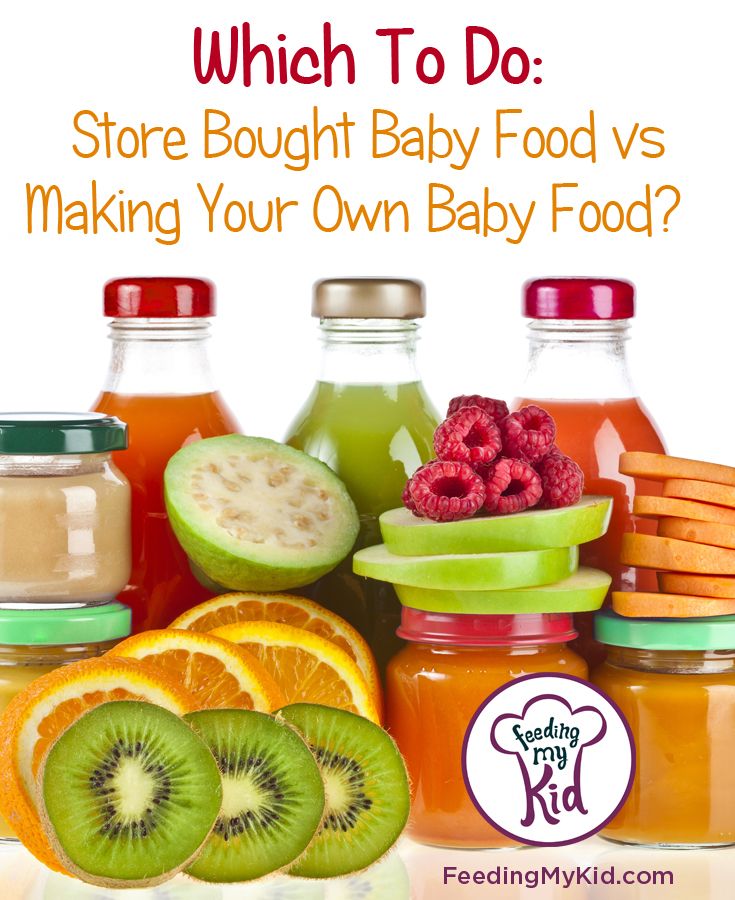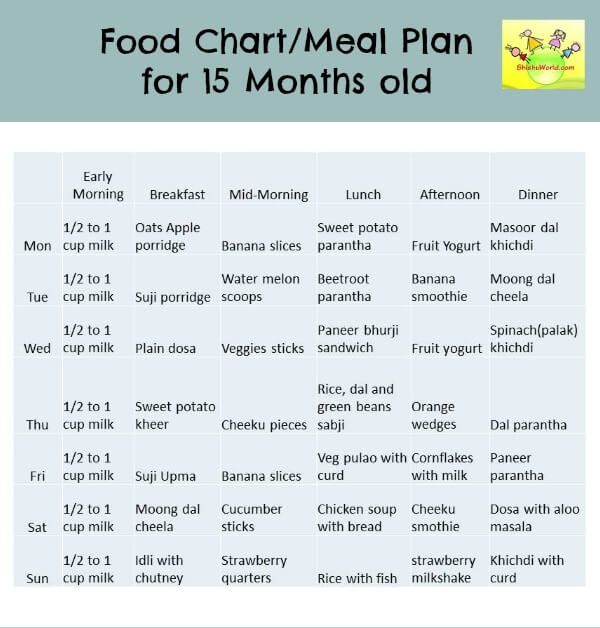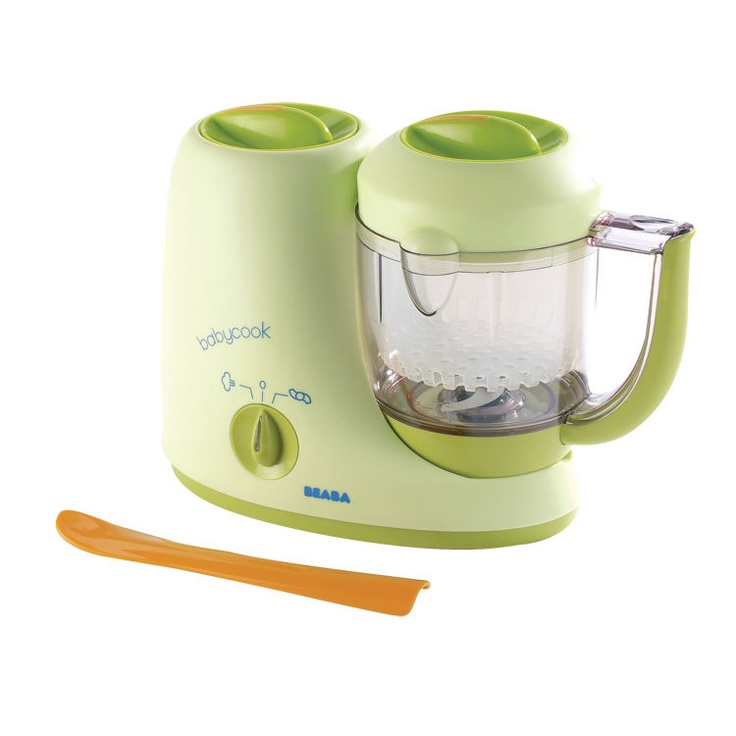Should you feed baby after projectile vomiting
How to Know Whether You Should
Your baby just threw up all the milk they’ve chugged down so far, and you’re wondering if it’s OK to continue feeding. How soon should you feed your baby after vomiting?
It’s a good question — just about every parent has likely pondered this. Spit-up is almost a rite of passage for babies (and parents). Baby vomiting is also common and can happen for many reasons. Most of the causes aren’t serious.
The short answer — because you may have a very fussy baby on your hands and want to get back to them ASAP — is yes, you can usually feed your baby after they vomit all over your favorite sweater, sofa throw, and rug.
Here’s just about everything you need to know about feeding your baby after vomiting.
Baby vomit and spit-up are two different things — and they can have different causes. Spitting up is common in babies under the age of 1 year. It typically happens after feeding. Spit-up is usually an easy flow of milk and saliva that dribbles from your baby’s mouth. It often happens with a burp.
Spit-up is normal in healthy babies. It can happen for several reasons. About half of all babies 3 months and under have a type of acid reflux called infant reflux.
Spit-up from infant reflux is especially bound to happen if your baby has a full stomach. Being careful not to overfeed a bottle-fed infant can help. Spitting up typically stops by the time your baby is a year old.
On the other hand, vomiting is typically a more forceful throwing-up of milk (or food, if your baby is old enough to eat solids). It happens when the brain signals the muscles around the stomach to squeeze.
Vomiting (like gagging) is a reflex action that can be triggered by a number of things. These include:
- irritation from a viral or bacterial infection, like the stomach bug
- fever
- pain, such as from a fever, earache, or vaccination
- blockage in the stomach or intestines
- chemicals in the blood, like medicine
- allergens, including pollen; very uncommon in babies under 1 year
- motion sickness, such as during a car ride
- dizziness, which might happen after being twirled around too much
- being upset or stressed
- strong smells
- milk intolerance
Vomiting is also common in healthy babies, but it might mean that your baby has caught a bug or is feeling a bit under the weather.
Too much vomiting can cause dehydration and even weight loss in very serious cases. Milk feeding can help prevent both of these. Offer your baby a feeding after they’ve stopped throwing up. If your baby is hungry and takes to the bottle or breast after vomiting, go right ahead and feed them.
Liquid feeding after vomiting can sometimes even help settle your baby’s nausea. Start with small amounts of milk and wait to see if they vomit again. Your baby might vomit the milk right back up, but it’s better to try than not.
If your little one is at least 6 months old and doesn’t want to feed after throwing up several times, offer them water in a bottle or a spoon. This can help prevent dehydration. Wait a short while and try feeding your baby again.
In some cases, it’s better not to feed a baby right after vomiting. If your baby is throwing up because of an earache or fever, they may benefit from medication first.
Most pediatricians recommend pain medications like infant Tylenol for babies in their first year.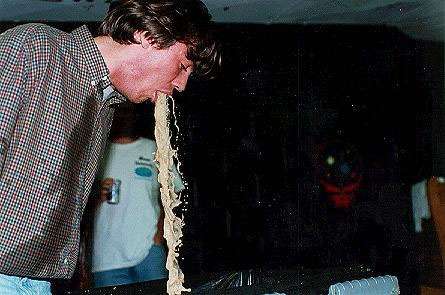 Ask your doctor about the best medication and dosage for your baby.
Ask your doctor about the best medication and dosage for your baby.
If giving pain medication based on your doctor’s advice, wait about 30 to 60 minutes after doing so to feed your little one. Feeding them too soon might cause another bout of vomiting before the meds can work.
Motion sickness isn’t common in babies under the age of 2 years, but some babies may be more sensitive to it. If your baby vomits from motion sickness, it’s better not to offer a feeding afterward.
You’re in luck if your baby likes to nod off in the car. Wait until you’re out of the car to feed your baby milk.
Baby vomiting can be worrying, but it usually goes away by itself — even if your baby has the stomach bug. Most babies with gastroenteritis don’t need medical treatment. This means that most of the time, you’ll have to bravely wait out your baby’s vomiting.
But sometimes, throwing up is a sign that something’s not right. You know your baby best. Trust your gut and call their doctor if you feel your little one is unwell.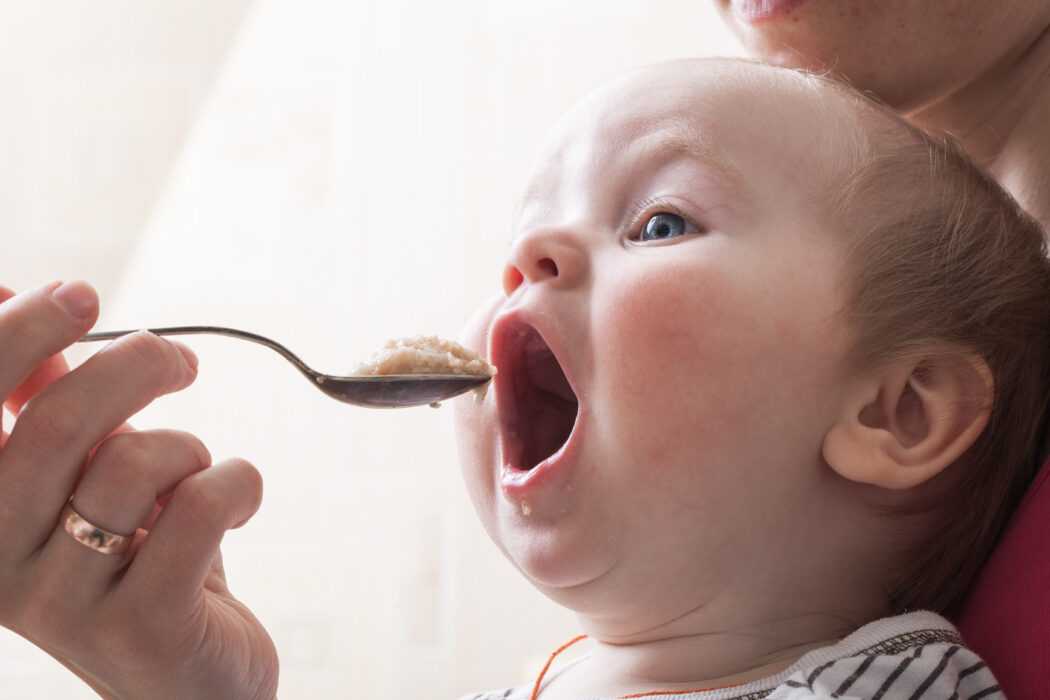
In addition, take your baby to a doctor immediately if they’ve been vomiting for 12 hours or longer. Babies and children can dehydrate quickly from too much vomiting.
Also call your baby’s pediatrician if your baby can’t hold anything down and has signs and symptoms of being unwell. These include:
- constant crying
- pain or discomfort
- refusal to feed or drink water
- diaper that hasn’t been wet for 6 hours or longer
- diarrhea
- dry lips and mouth
- crying without tears
- extra sleepiness
- floppiness
- vomiting blood or fluid with black flecks (“coffee grounds”)
- lack of smile or response
- vomiting green fluid
- bloated tummy
- blood in bowel movements
You won’t usually have any control over when or how much your baby vomits. When it happens on occasion, repeat this mantra to help you cope: “Healthy babies sometimes vomit.”
However, if your baby often vomits (or spits up) after feeding, you may be able to take some preventative steps. Try these tips:
Try these tips:
- avoid overfeeding
- give your baby smaller, more frequent feeds
- burp your baby often between feeds and after feeds
- prop up your baby so they’re upright for at least 30 minutes after feeding (but don’t prop your baby up for sleep or use anything to position them in their crib or elevate their mattress)
If your baby has a tummy bug and is old enough to eat solid foods, avoid feeding solids for about 24 hours. A liquid diet can help the stomach settle after a bout of vomiting.
Vomiting and spit-up are common in healthy babies. In most cases, you can milk feed shortly after your baby vomits. This helps to prevent your baby from getting dehydrated.
In some cases it’s best to wait a little while before trying to feed your baby again. If you’re giving your child medication like pain and fever relievers, wait a bit so the meds don’t come back up.
If your baby is vomiting a lot or seems otherwise unwell, call your pediatrician immediately.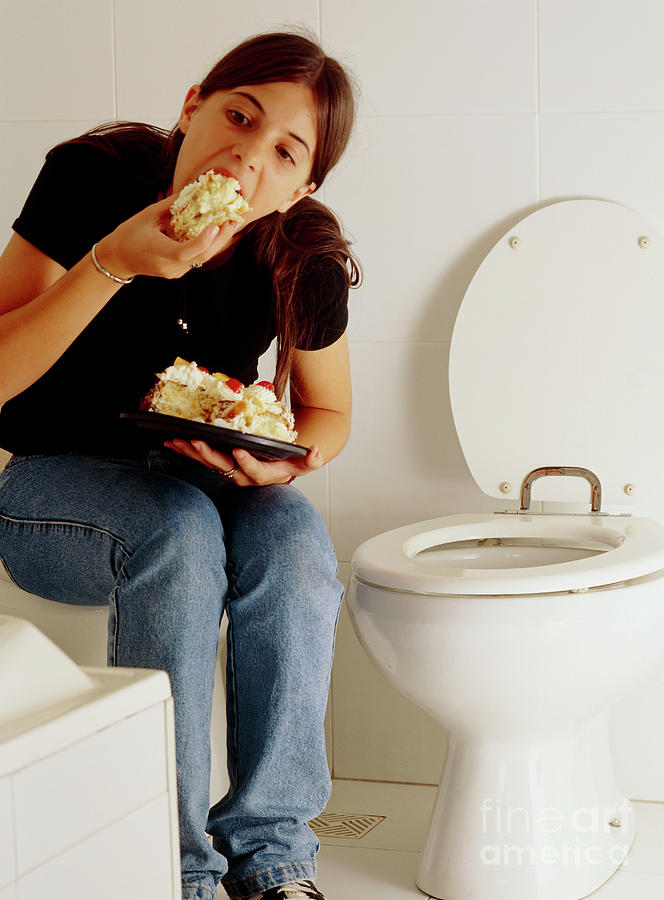 If you’re unsure if your baby’s vomiting or spit-up is cause for concern, it’s always best to check with your doctor.
If you’re unsure if your baby’s vomiting or spit-up is cause for concern, it’s always best to check with your doctor.
Vomiting (0-12 Months)
Is this your child's symptom?
- Vomiting (throwing up) stomach contents
- Other names for vomiting are puking, barfing and heaving
Causes of Vomiting
- Viral Gastritis. Stomach infection from a stomach virus is the most common cause. Also called stomach flu. A common cause is the Rotavirus. The illness starts with vomiting. Watery loose stools may follow within 12-24 hours.
- Food Allergy. Vomiting can be the only symptom of a food reaction. The vomiting comes on quickly after eating the food. Uncommon in infants, but main foods are eggs and peanut butter.
- Coughing. Hard coughing can also cause your child to throw up. This is more common in children with reflux.
- Serious Causes. Vomiting alone should stop within about 24 hours.
 If it lasts over 24 hours, you must think about more serious causes. An example is a kidney infection. A serious cause in young babies is pyloric stenosis. See below for more on this.
If it lasts over 24 hours, you must think about more serious causes. An example is a kidney infection. A serious cause in young babies is pyloric stenosis. See below for more on this.
Pyloric Stenosis (Serious Cause)
- The most common cause of true vomiting in young babies.
- Onset of vomiting is age 2 weeks to 2 months
- Vomiting is forceful. It becomes projectile and shoots out.
- Right after vomiting, the baby is hungry and wants to feed. ("hungry vomiter")
- Cause: The pylorus is the channel between the stomach and the gut. In these babies, it becomes narrow and tight.
- Risk: Weight loss or dehydration
- Treatment: Cured by surgery.
Vomiting Scale
- Mild: 1 - 2 times/day
- Moderate: 3 - 7 times/day
- Severe: Vomits everything, nearly everything or 8 or more times/day
- Severity relates even more to how long the vomiting goes on for.
 At the start of the illness, it's common for a child to vomit everything. This can last for 3 or 4 hours. Children then often become stable and change to mild vomiting.
At the start of the illness, it's common for a child to vomit everything. This can last for 3 or 4 hours. Children then often become stable and change to mild vomiting. - The main risk of vomiting is dehydration. Dehydration means the body has lost too much fluid.
- The younger the child, the greater the risk for dehydration.
Dehydration: How to Tell
- The main risk of vomiting is dehydration. Dehydration means the body has lost too much water.
- Vomiting with watery diarrhea is the most common cause of dehydration.
- Dehydration is a reason to see a doctor right away.
- Your child may have dehydration if not drinking much fluid and:
- The urine is dark yellow and has not passed any in over 8 hours.
- Inside of the mouth and tongue are very dry.
- No tears if your child cries.
- Slow blood refill test: Longer than 2 seconds. First, press on the thumbnail and make it pale. Then let go. Count the seconds it takes for the nail to turn pink again.
 Ask your doctor to teach you how to do this test.
Ask your doctor to teach you how to do this test.
When to Call for Vomiting (0-12 Months)
Call 911 Now
- Can't wake up
- Not moving
- You think your child has a life-threatening emergency
Call Doctor or Seek Care Now
- Dehydration suspected. No urine in over 8 hours, dark urine, very dry mouth and no tears.
- Stomach pain when not vomiting. Exception: stomach pain or crying just before vomiting is quite common.
- Age less than 12 weeks old with vomiting 2 or more times. Exception: normal spitting up.
- Vomited 3 or more times and also has diarrhea
- Severe vomiting (vomits everything) more than 8 hours while getting Pedialyte (or breastmilk)
- Head injury within the last 24 hours
- Weak immune system. Examples are sickle cell disease, HIV, cancer, organ transplant, taking oral steroids.
- Vomiting a prescription medicine
- Fever over 104° F (40° C)
- Fever in baby less than 12 weeks old.
 Caution: Do NOT give your baby any fever medicine before being seen.
Caution: Do NOT give your baby any fever medicine before being seen. - Your child looks or acts very sick
- You think your child needs to be seen, and the problem is urgent
Contact Doctor Within 24 Hours
- All other infants (age less than 1 year) with vomiting. See Care Advice while waiting to discuss with doctor.
Seattle Children's Urgent Care Locations
If your child’s illness or injury is life-threatening, call 911.
- Bellevue
- Everett
- Federal Way
- Seattle
Care Advice for Vomiting
- What You Should Know About Vomiting:
- Most vomiting is caused by a viral infection of the stomach.

- Vomiting is the body's way of protecting the lower gut.
- The good news is that stomach illnesses last only a short time.
- The main risk of vomiting is dehydration. Dehydration means the body has lost too much fluid.
- Here is some care advice that should help.
- Most vomiting is caused by a viral infection of the stomach.
- Formula Fed Babies - May Give Oral Rehydration Solution (ORS) for 8 Hours:
- If vomits once, give half the regular amount of formula every 1 to 2 hours.
- If vomits formula more than once, offer ORS for 8 hours. If you don't have ORS, use formula until you can get some.
- ORS is a special fluid that can help your child stay hydrated. You can use Pedialyte or the store brand of ORS. It can be bought in food stores or drug stores.
- Spoon or syringe feed small amounts. Give 1-2 teaspoons (5-10 mL) every 5 minutes.
- After 4 hours without throwing up, double the amount.
- Return to Formula. After 8 hours without throwing up, go back to regular formula.

- Breastfed Babies - Reduce the Amount Per Feeding:
- If vomits once, nurse half the regular time every 1 to 2 hours.
- If vomits more than once, nurse for 5 minutes every 30 to 60 minutes. After 4 hours without throwing up, return to regular nursing.
- If continues to vomit, switch to pumped breastmilk. (ORS is rarely needed in breastfed babies. It can be used if vomiting becomes worse).
- Spoon or syringe feed small amounts of pumped milk. Give 1-2 teaspoons (5-10 mL) every 5 minutes.
- After 4 hours without throwing up, return to regular feeding at the breast. Start with small feedings of 5 minutes every 30 minutes. As your baby keeps down the smaller amounts, slowly give more.
- Pumped Breastmilk Bottle-Fed Infants - Reduce the Amount per Feeding:
- If vomits once and bottle-feeding breastmilk, give half the regular amount every 1-2 hours.
- If vomits more than once within last 2 hours, give 1 ounce (30 mL) every 30 to 60 minutes.

- If continues to vomit, give 1-2 teaspoons (5-10 mL) every 5 minutes. Only if not tolerating breastmilk, switch to ORS (e.g., Pedialyte) for every 5 minutes for a few hours.
- After 4 hours without vomiting, return to regular feedings. Start with 1 ounce (30 mL) every 30 minutes and slowly increase as tolerated.
- Stop All Solid Foods:
- Avoid all solid foods and baby foods in kids who are vomiting.
- After 8 hours without throwing up, gradually add them back.
- If on solid foods, start with starchy foods that are easy to digest. Examples are cereals, crackers and bread.
- Do Not Give Medicines:
- Stop using any drug that is over-the-counter for 8 hours. Reason: Some of these can make vomiting worse.
- Fever. Mild fevers don't need to be treated with any drugs. For higher fevers, you can use an acetaminophen suppository (such as FeverAll). This is a form of the drug you put in the rectum (bottom).
 Ask a pharmacist for help finding this product. Do not use ibuprofen. It can upset the stomach.
Ask a pharmacist for help finding this product. Do not use ibuprofen. It can upset the stomach. - Call your doctor if: Your child vomits a drug ordered by your doctor.
- Try to Sleep:
- Help your child go to sleep for a few hours.
- Reason: Sleep often empties the stomach and removes the need to vomit.
- Your child doesn't have to drink anything if his stomach feels upset and he doesn't have any diarrhea.
- Return to Child Care:
- Your child can return to child care after the vomiting and fever are gone.
- What to Expect:
- For the first 3 or 4 hours, your child may vomit everything. Then the stomach settles down.
- Vomiting from a viral illness often stops in 12 to 24 hours.
- Mild vomiting and nausea may last up to 3 days.
- Call Your Doctor If:
- Vomits clear fluids for more than 8 hours
- Vomiting lasts more than 24 hours
- Blood or bile (green color) in the vomit
- Stomach ache present when not vomiting
- Dehydration suspected (no urine in over 8 hours, dark urine, very dry mouth, and no tears)
- You think your child needs to be seen
- Your child becomes worse
And remember, contact your doctor if your child develops any of the 'Call Your Doctor' symptoms.

Disclaimer: this health information is for educational purposes only. You, the reader, assume full responsibility for how you choose to use it.
Last Reviewed: 10/27/2022
Last Revised: 09/21/2022
Copyright 2000-2022 Schmitt Pediatric Guidelines LLC.
Vomiting and diarrhea in a child
Acute gastroenteritis is characterized by an increase in body temperature (from subfebrile condition to high fever), vomiting, liquefaction of the stool. Rotavirus is the most common cause of gastroenteritis. The most severe is the first episode of rotavirus gastroenteritis in children from 6 months to 2-3 years. The peak incidence of this infection occurs in the winter - spring.
The danger of viral gastroenteritis is associated with rapid dehydration and electrolyte disturbances due to loss of water and salts in loose stools and vomiting. Therefore, feeding the child is of fundamental importance. In order not to provoke vomiting, you need to drink fractionally (1 - 2 teaspoons), but often, if necessary, every few minutes. For convenience, you can use a syringe without a needle or a pipette. In no case should you drink the child with just water, this only exacerbates electrolyte disturbances! There are special saline solutions for drinking - rehydron (optimally ½ sachet per 1 liter of water), Humana electrolyte, etc.
For convenience, you can use a syringe without a needle or a pipette. In no case should you drink the child with just water, this only exacerbates electrolyte disturbances! There are special saline solutions for drinking - rehydron (optimally ½ sachet per 1 liter of water), Humana electrolyte, etc.
Daily need for fluid is presented in the table:
Weight of the child Daily need for liquid
2 - 10 kg 100 ml/kg
10 - 20 kg 1000 ml/kg per kg over 10 kg
> 20 kg 1500 ml + 20 ml/kg for each kg over 20 kg
In addition, current fluid losses with loose stools and vomiting are taken into account - for each episode of diarrhea / vomiting, an additional 100 - 200 ml of fluid is given.
Intravenous rehydration (fluid replenishment with drips) is done only for severe dehydration and persistent vomiting. In all other cases, you need to drink the child - it is safe, effective and painless.
Smecta (but do not give smecta if it induces vomiting), espumizan or Sab simplex are used as adjuvants.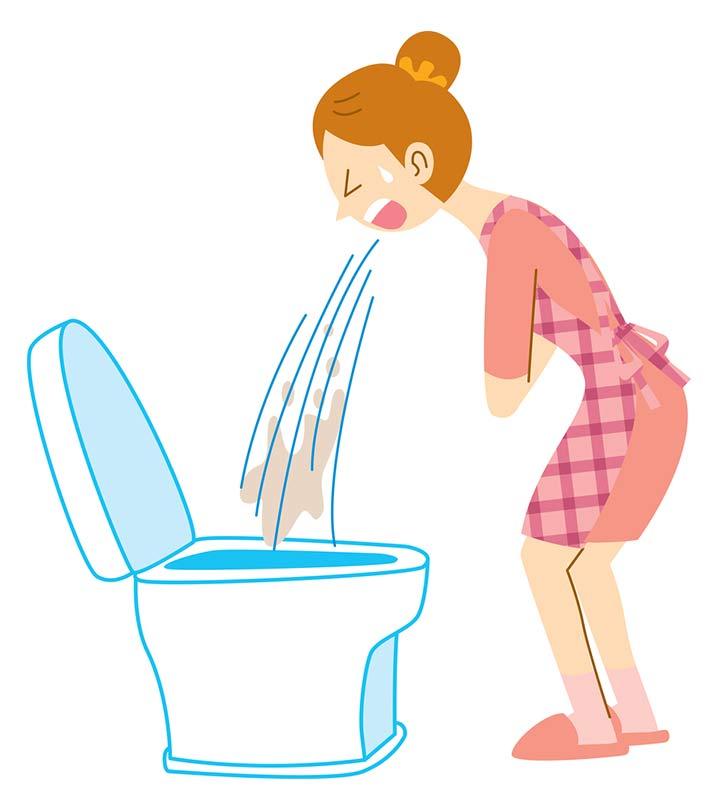 Enterofuril is not recommended for use, as it is not effective either in viral infections or in invasive bacterial intestinal infections. In the diet during the acute period, fresh vegetables and fruits (except bananas), sweet drinks are excluded, and whole milk is limited only in older children.
Enterofuril is not recommended for use, as it is not effective either in viral infections or in invasive bacterial intestinal infections. In the diet during the acute period, fresh vegetables and fruits (except bananas), sweet drinks are excluded, and whole milk is limited only in older children.
Parents need to be aware of the first signs of dehydration - a decrease in the frequency and volume of urination, thirst, dry skin and mucous membranes. With increasing dehydration, the child becomes lethargic, stops urinating, thirst disappears, the skin loses turgor, and the eyes “sink”. In this case, there is no time to waste, it is necessary to call a doctor and hospitalize the child.
The appearance of blood and mucus in the stool in a child should be alerted, because this is typical for bacterial enterocolitis. Stool with such infections is not large (in contrast to copious watery stools with rotavirus infection), false urge to defecate and abdominal pain may be noted. Drinking water in such cases may not be enough, and, as a rule, antibiotics are required.
Vomiting and Nausea in Babies: Treat Them Naturally!
Vomiting This is a violent discharge of stomach contents through the mouth, which is very common in children. Sometimes this can turn out to be Vomiting. This is useful for ridding their bodies of unwanted substances and pathogens that they may have inadvertently ingested.
Children usually stop vomiting on their own without any medical intervention. However, it is important to watch for signs of drought. In children, actively try to calm the stomach and replace lost fluids and energy before the condition develops into a life-threatening level.
In this article
Causes of nausea and vomiting in children
Vomiting is usually a sign of some underlying disease, for example:
- Gastroenteritis or stomach flu
- gastroesophageal reflux disease
- food poisoning
- seasickness
- food allergy
- mental stress
- Lack of sleep
- Indigestion
- empty stomach
- Respiratory infections
- Some infections are considered serious health problems, such as meningitis and other infections.
 urinary tract infection و middle ear infections and appendicitis
urinary tract infection و middle ear infections and appendicitis - Injury, eg blow to the head; in this case, vomiting may be a sign of increased intracranial pressure.
- Overeating, eating fast food, or eating foods rich in fat, sugar, and fiber can have negative effects. Digestive which still manifests itself in children and causes an attack of vomiting.
- cyclic vomiting syndrome Occasionally, recurrent vomiting may not be associated with any of the above causes, but rather with a symptom of cyclic vomiting syndrome, which is characterized by recurrent bouts of vomiting lasting hours to days. A 2012 study published in the journal Gastroenterology and Neurology reports that cyclic vomiting syndrome occurs in about three out of every 100,000 children.
- Projectile vomiting in infants shortly after feeding may also indicate pyloric stenosis, a condition that affects the baby's digestive system and prevents food from reaching the small intestine.
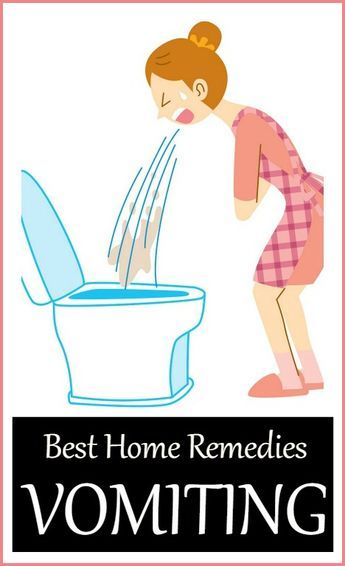 This condition requires immediate medical attention.
This condition requires immediate medical attention. - Accidental ingestion of certain toxic substances may cause the child to vomit.
Symptoms of nausea and vomiting in children
As a rule, vomiting often accompanies other symptoms associated with a specific disease or as a result of general weakness. Some of the symptoms that may accompany vomiting:
- refusal
- Irritability or inattention
- pale skin
- Headache
- Abdominal pain
- Low heat
- Increased heart rate
- Bloating
- Diarrhea
not allowed Nausea vomiting in children
To reduce the chance of vomiting in children
- Teach them to wash their hands regularly to stay healthy; Especially before and after meals, as well as after going to the toilet.
- Limit children's contact with people with indigestion.
When will you see a doctor?
Sometimes a doctor's visit is needed, especially if the child is vomiting for a long time, the child is dehydrated, unable to retain fluid for 12 hours, or if the following symptoms are not clear: neck stiffness, cough, fever, migraine.
Vomiting and associated symptoms are often "cured" after the cause of the problem is removed. In most cases, vomiting in children stops without special treatment. However, you can try some home remedies to stop vomiting and make your child feel better.
Easy Ways to Relieve Nausea and Vomiting in Children
Here are some home remedies for nausea and vomiting in children.
1. Increase your child's water intake
Vomiting can lead to loss of water in the body and eventually dehydration, which can harm your baby. Thus, the first step to treating vomiting in children and stopping dehydration is to increase water intake. Dieting with a liquid stomach is not easy, but it goes a long way in restoring the body's strength.
Water is usually sufficient to hydrate the child's body. It is very important to give your child enough water to drink from time to time, even if he is not particularly thirsty.
In addition, one study suggests that parents should not feel free to give young children minimally rehydrated apple juice or their preferred beverage instead of electrolyte solution when they are recovering from vomiting.
- Breastfed children should continue to receive breast milk, but be sure to breastfeed more often.
- Have your child drink small amounts of water and clear liquids throughout the day.
- You can also offer drinks that contain carbohydrates or electrolytes, but be careful as the excess sugar in these drinks can often cause diarrhea.
- Make him suck on popsicles made from juice. Sports drinks can also help a lot.
- It is even useful to give pieces of ice to suck at frequent intervals.
Note: For the first 24 hours or so after any illness that causes vomiting, do not give your child solid food and encourage him to drink more fluids. Children should not drink water unless directed by a doctor.
2. Give your child oral rehydration solution.
Home Oral Rehydration Solution (ORS) is recognized by the World Health Organization (WHO) as a first line treatment for rehydration. This is a quick solution to replenish lost nutrients and fluids and is easy to make at home. ORS packages are also readily available on the market.
ORS packages are also readily available on the market.
A 2009 study in the American Family Physician reports that oral rehydration therapy is the preferred treatment for mild to moderate dehydration caused by diarrhea in children.
- Add ½ teaspoon salt and 6 teaspoons sugar (or brown sugar) to 4 glasses of drinking water.
- Mix well until salt and sugar are completely dissolved.
- Give the child this solution several times a day until fully recovered.
3. Fennel seeds can help.
Another good anomaly remedy that has been proven by research to be effective in stopping vomiting in children is fennel.
Fennel seeds soothe the digestive system and relieve Nausea vomiting; It also has antimicrobial properties that help prevent and treat stomach flu, which can cause vomiting. In addition, its aromatic taste soothes the stomach.
- Add 10 tablespoons of crushed fennel seeds to 1 cup boiling water and let steep for 2 minutes.
 Strain this mixture and let your child drink this tea XNUMX-XNUMX times a day.
Strain this mixture and let your child drink this tea XNUMX-XNUMX times a day. - You can also let your child chew a teaspoon of fennel seeds to help with this problem.
5. Get your child to drink lemonade.
maybe Lemon also helps with chronic vomiting. The smell has a tonic effect on the body that can reduce Nausea Prevents vomiting. Lemons, rich in vitamins and minerals, can help make up for the loss due to vomiting.
Lemon's high vitamin C content is another reason to include it in your treatment as it helps boost the body's immunity. Even citric acid helps kill bacteria that cause food poisoning and vomiting.
- Squeeze a fresh lemon into one cup of water and add some honey. Let your child drink several times a day. (Do not give honey to children under 1 year old.)
- You can even let your child smell fresh lemon peel to help relieve nausea and vomiting.
- Sucking on lozenges, such as lemon drops, can help relieve bad taste in the mouth after vomiting.

6. Acupressure can be helpful
Because vomiting and associated nausea and discomfort often prevent a child from drinking, let alone eating, acupressure is an effective non-drug treatment to check for ongoing fluid and mineral loss and prevent dehydration.
TCM prescribes various acupressure points on the body, which are pressed for immediate relief of the child's condition and without pain. Pressure on these acupuncture points tenses the muscles and stimulates circulation, which helps stop vomiting and nausea.
Therefore, pressure is used to stimulate certain points of the body to relieve symptoms.
For acupressure P6:
- Place three fingers on the child's wrist.
- Place your thumb under your child's index finger.
- Rub this point in steady circular motions for 2-3 minutes. However, don't push too hard.
- Repeat the same on the other wrist.
- If your child is old enough, they can do it themselves.
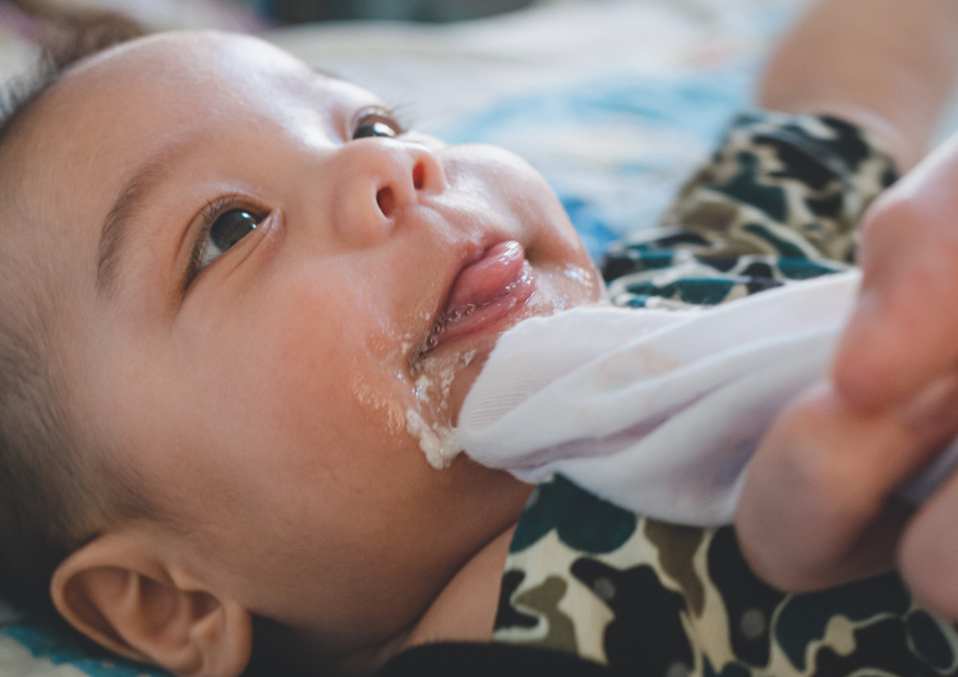
Additional Tips
- Do not give over-the-counter medicines unless specifically directed by your child's pediatrician.
- When your child vomits while lying down, try to keep him or her on her stomach or on her left side as far as possible.
- After vomiting, do not give anything to eat for at least an hour.
- Stay away from solid foods until clear liquids are tolerated, as solid foods can irritate a sensitive stomach.
- Your child may need prescription antiemetics if he vomits frequently. These medicines help reduce the frequency of vomiting.
- Give your child enough rest and sleep. A relaxed child tends to recover faster because it gives the body time to recover from being tense during a bout of vomiting.
- Deep breathing helps support the biological response that causes motion sickness.
- Do not give your child large meals. Instead, choose several small meals throughout the day.
- Keep your child away from fried and fatty foods that are difficult to digest and cause vomiting.

- Keep nausea triggers and try to avoid them.
Expert Answers (Q&A)
What is the best way to stop vomiting in children?
I think the best way to stop vomiting in children is to treat the underlying cause of the vomiting first. There are many simple home remedies such as making ice cubes from oral rehydration solutions, administering gelatin to the child as a fluid substitute, administering rehydration fluid 30 minutes after vomiting to reduce the chance that the child will immediately vomit again, and feeding the child. tender food after vomiting has stopped for 8 hours. It is important to watch for symptoms of dehydration and avoid taking medications without a doctor's approval.
What drinks should be given to a child after vomiting?
It is important to give your child more fluids if vomiting is severe or frequent to prevent dehydration. The best liquid for this purpose is an oral rehydration solution. If the child cannot tolerate it, other fluids can be given to keep him hydrated and reduce nausea, such as ginger, peppermint tea, water, warm ginger tea, fennel seeds, or cloves.
Can a child vomit without fever?
Many children vomit without fever Especially in the case of viral gastroenteritis, better known as stomach flu. Many other causes, such as food allergies, concussions, bowel obstructions, habitual vomiting, migraines, motion sickness, certain medications, or stress, can cause vomiting without fever.
Why do children vomit at night?
Some conditions may cause vomiting at night, for example: gastroesophageal reflux disease, gastroenteritis, appendicitis, head trauma, migraine ، pancreatitis, food poisoning, hepatitis, peptic ulcer.
Please give more advice or information on how to manage vomiting in children.
Here are some additional tips for controlling vomiting in children:
- Pediatricians should teach parents to stay calm and reassure them that their child will be better within 24 hours.
- Avoid sports drinks, sodas and juices as they contain enough sodium and high carbohydrates.




